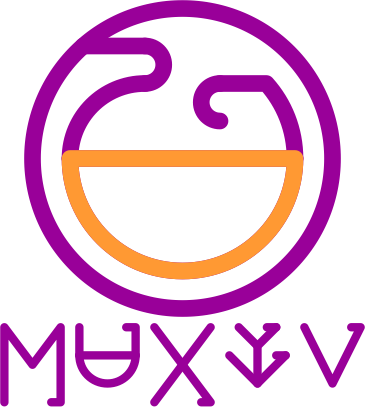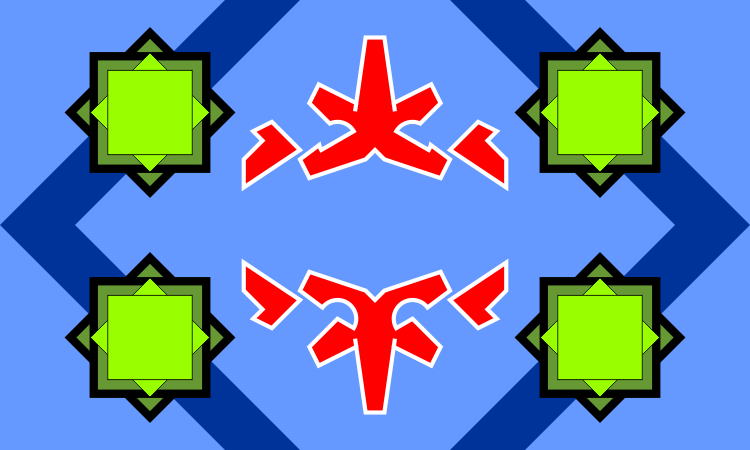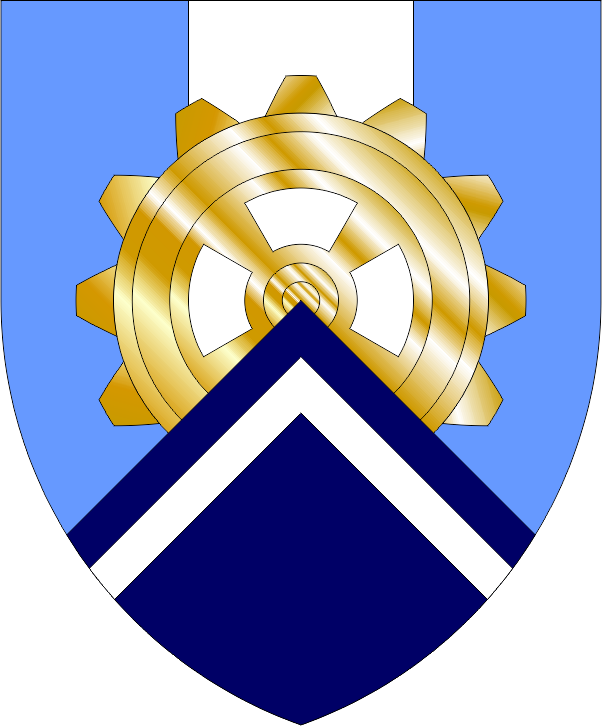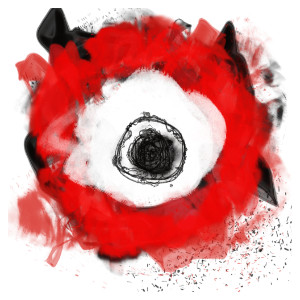Iuxat
Iuxat (literally "language" or "to speak"), also known as Old Rostran, is the traditional language of the High Rostran and Low Rostran peoples. With numerous mutually intelligible island dialects, the core cultural understanding of Iuxat is maintained by strong nautical trade ties between the localities of the Rostran Archipelago Confederacy and the Hermitage Island Fellowship. Iuxat is known for it's frequent use of the 'ks' consonant string (romanized as 'x"), tight grouping of vowel sounds (especially with the close back unrounded 'u'), and diverse vowel sounds in general.
Writing System
The alphabet of Iuxataba. Also known as the 'Eiqa Adiuxataba' - meaning 'The Spirit-Script's Substance.'Iuxataba, the written form of Iuxat, is an alphabet, though a few characters code for dipthongs, tripthongs, or consonant clusters. It is read left-to-right, then top-to-bottom. Word breaks are indicated by spaces. While sentence breaks are often indicated with a space, vertical bar, and another space in machine-generated text, written, artistic, and official writing often encloses sentences in rectangular boxes.
The original glyphs of Iuxataba script were ideograms for common sights in the Rostran home islands (i.e. spears) and took on phonic meaning based on the first sound in the words they represented. Occasionally, neologisms will enter the Iuxat lexicon entirely as a result of the imagery associated with Iuxataba script rather than any obious cognate. For example, the verb "nedaum," meaning "to marry," came about because, when the word "nedaum" is written in Iuxataba, the characters resemble elements of a traditional High Rostran wedding ceremony.
Iuxataba was traditionally incised into hardwood with chisels. Later versions of the alphabet are written with flat-nibbed squid ink pens on thin wood scrolls, introducing curves, serifs, and thickened strokes on the leftmost vertical lines. Modern Iuxataba script is written with clockwise strokes on consonants and counterclockwise on vowels.
'Iuxataba' as written in Iuxataba.
Iuxataba script is generally written with the bottoms of all characters aligned with one another, though sometimes the tops will be aligned instead for stylistic effect. The difference in height between consonant and vowel characters helps the reader distinguish between the two.
Name mark of Eudoxia Chemical Group. Note the 'eu' letter in the center stylized to resemble a chemical vessel. Also note the vertical shifting of the vowel letters for stylistic effect.
Phonology
Syllables in Iuxat are generally take the form of (C)(C)V(C)(C). Particles always end with a consonant. The sounds ŋ (ng) and ks (x) generally cannot occur at the beginning of a word, and kw (q) cannot occur at the end of a word.
When spoken, emphasis is usually applied to the first syllable in the first particle affixed to a root and on the first syllable in the root word itself. For example, the spirit Ixaumosana's, the emphasis is put on the 'Ix' and 'os' syllables. This helps speakers differentiate between a string of particles and the root to which they are affixed.
Gemination does not occur within root words, but it rarely occurs when a particle is applied to such a word; in Iuxat's orthography, this is denoted by the repetion of the sound in question. As a special case, fishermen using the "Noniuxat Assoxa" (lit. "speaking like fish") professional dialect can apply gemination to the vowels of direction words and associated particles to imply heading and distance.
Morphology
Iuxat is polysynthetic and features numerous particles which may be applied as prefixes to inflect words. Particles may be omitted if the information they encode is redundant (i.e. Vex is the speaker's brother and the speaker knows Vex is a man, so (second person familiar) can be used to address him without the (masc.) particle). Particles often take the form of a vowel-consonant pair.
For nouns, the following noun particles exist and generally occur in the order presented:
- Negatory: ux- (negates following particle or word). For example, "uxeriot," being "(negatory)(single)(discrete object)," means "Not a single thing."
- Gender: eun- (masculine), aum- (feminine), ul- (inanimate/non-humanoid). If a living non-humanoid creature has a known gender, the masculine or feminine gender is applied as appropriate after the particle for non-humanoids (uleun for male and ulaum for female).
- Plurality: er- (single), eret- (plural), eretas (many), otas- (all)
- Type: ov- (person), utab- (plant), aqit- (animal), iot- (discrete object), eiq- (substance), osan- (water/liquid), eus- (place), ix- (spirit). The (spirit) particle, added before any other particles, implies that the thing in question exists only as a spiritual entity; whether such an entity is mythological or simply deceased is inferred through context. Type particles can also function as nouns in constructions like "(inanimate)(plant) (present) (present) to grow" for "The plant is growing") or "store the (masc.)(person) (past)(future)(to walk)." for "The man walked to the store but isn't there yet." Particles are often terminated with an "a" sound if used as a noun in this fashion, though not always (as in the case of the Eiquereus Craglands, with the name "Eiquereus" meaning "place of only one substance"). The "a" suffix may also be appended to particles to prevent two consonants from blending together (i.e. "aumamiun," meaning "wife (lit. (feminine)(spouse)")
Verb Tenses
For verbs, up to two inflection particles are applied as prefixes to indicate tense. The first particle indicates when the action began, and the second indicates when the action ends; single particles indicate an instantaneous action or, conversely, that the action begins and ends in the same tense. Statements which are implied to end before they begin don't make logical sense but are nevertheless valid constructions, implying irony, nostalgia, or an implication of somehow communing with something which has been lost to time (i.e. funeral rites). Sometimes, affixing a tense particle to a noun turns the noun into a verb relating to what the noun does; for example, applying a tense particle to the word "soxa" changes the meaning of the word from the noun "fish" to the verb "to swim." The particles for verbs are:- Past: Ag
- Present: Non
- Future: Ran
Pronouns
Pronouns are constructed by adding noun particles (if necessary) to the following roots:- First Person: Ami (I/me "we" is constructed by affixing the (plural) particle to the first person pronoun
- Second Person: Ato (you familiar), Atodai (you not familiar/formal)
- Third Person: Alu (he/she/it familiar), Alugai (he/she/it not familiar/formal)
Syntax
Iuxat uses object-subject-verb (OSV) grammar (i.e. "The store, I visited"). For the sake of expedience, most speakers drop any parts of speech not required for context. For example, one might construct a simple command by dropping everything but the verb from a sentence (i.e. "Rut!," literally "Carry!," could be construed as meaning "I need you to carry this right now!").
Possession
Adjectives and adverbs follow the parts of speech they relate to. Applying an "ad-" prefix to a noun implies that it possesses whatever noun come before it (i.e. "Checkov's friend's gun" becomes "(gun) ad-(friend) adQekov").Semblance
Applying an "as-" prefix to a word puts it in the semblative case, and it now functions as an adjective or adverb (see above). An object or subject noun with this prefix means that the object or subject has the properties of the noun in question; for example, the construction "(second person) as(fish)" implies that the speaker thinks that you are a "fish-like person," perhaps implying that you are an excellent swimmer. A semblative noun follwing a verb implies that the action is taken in the manner normally ascribed to that noun (i.e. "You throw like a girl!" becomes "(fem.)(second person not familiar) (present)(throw) as(fem.)(person) (young)!").Number of Items & Times
Number is indicated as an adjective or adverb placed after all other modifiers except the time modifier and implies a specific number of individuals (for nouns) or specific number of times something happens (for verbs). Number may be used in addition to plurality particles for better specificity or emphasis. To create a time modifier, the particle "on-" is applied as a prefix to the word for a unit of time, and a number is applied after the word to indicate how many units of time have elapsed since, are elapsing, or will elapse; whether this time relates to how long ago something happened or how long it will take to happen is inferred from the tense particles of the preceding verb. For example, "We three men went to the dock twice four days ago!" becomes "Dock (masc.)(plural)(first person) (three) (past)(go to) (two) on(day) (four)!" The Rostran linguistic conception of time divides the day into eighteen equal portions based on the division of the day hours and night hours into three spans of time each:- "Onrisab" - Morning, extending from sunrise until roughly two hours before midday.
- "Onris" - Midday, extending roughly two hours before and after midday.
- "Onrisik" - Evening, from roughly two hours after midday to dusk.
- "Onluxab" - Waning Twilight, from dusk to roughly two hours before midnight.
- "Onlux" - Midnight, extending roughly two hours before and after midnight.
- "Onluxik" - Waxing Twilight, from roughly two hours after midnight to dawn.
Locations
Nouns are considered to 'own' locations around them, and this construction is also used to indicate how a verb relates to a subject. For example, "The inside of the store" would be constructed as "inside ad-store" whereas "We went into the store" would be constructed as "inside ad-store (plural)(first person) (past)(to go to)." Iuxat lacks 'to' and 'from' prepositions, instead treating "to go (to)" and "to come (from)" as different verbs. If additional information is required about from where an object originates, the sentence is constructed to imply that the noun 'belongs' to a location. For example, "It came from the beach" might be constructed "(object)(3rd person) (poss.)beach to come (from)."Interogatives
Terminating a sentence with a lone "e?" sound turns the sentence into an interogatory statement (i.e. "You will go to Eurymaxim with me." becomes "Will you go to Eurymaxim with me?"). The word "emid?" is an all-purpose question word that implies that the part of the scentence it is attached to is the part the person is inquiring about. For example, the question "Who was this/that man?" might be constructed as "emid(masc.)(third person formal) (past)to be?" Using emi- as a particle in lieu of tense particles for a verb questions when the verb takes place. For example, "When did you swim home, brother?" might be constructed as "home (masc.)(second person familiar) emid-swim to?)Transitive Verbs
Iuxat is a nominative/accusative language. Transitive verbs are those which accept multiple arguments. In the case of sentences like "I took the dog to the vet", the verb "to take (to)" accepts "dog" and "to the vet" as direct and indirect objects respectively. To accomplish this, the indirect object (in the forgoing example, the vet) is given an "il-" prefix and placed immediately after the verb and any associated adverbs ("The dog , we took to the vet"). As another example, "Yesterday, my wife and I hurriedly delivered our daughter to school" could be constructed "Our daughter, my wife and I delivered hurriedly yesterday to the school," or "(female)(child) (possessive)(1st per), (female)(spouse) (possessive)(1st per) and (1st per) (past)(to deliver to) (quick) (time particle)(day)(one) (indirect)(place)(intelligence)"Vocabulary
While Iuxat sometimes makes use of loan words, most words in Iuxat are created by creating portmanteaus from existing terms or phrases. For example, "Ixaba" - the name of the religious text central to Rostran Esotericism, is a fusion of the words "ix" (faith/spirit) and "aba" (written/script "Ix aba" literally means "written faith" or, "spirit-script" Similarly, the Rostran term for airships is a fusion of the nouns for "ship" and "sky," while the term for a computer derives from the phrase "it (inanimate) dreams."
Math
Iuxat uses a senary (base 6) positional numeral system that incorporates a zero digit ('uxer,' or 'not one'). This derives both from the fact that six is one more than the number of digits most people have on one hand and because, as the Rostrans are frequent navigators on the oceans of Rostral D,, it is useful to be able to associate the numbers one through six with the individual faces of a cube layer (see Directions below). Indeed, the Rostran method of numbering cube faces is the original influence for the naming conventions of the Navigator's Guild. The zero digit in Iuxataba (see Writing System) is an upward-curved line with an accent on the right side, signifying an open hand; all other digits are groups of five tallies, with some fonts stylzing these tallies as fingers and a thumb. Numbers are spoken word-for-word from the highest radix to the lowest, with all but the last digit spoken with an -i suffix. The Iuxat numbering system also features a binary sub-base, with each alternating number featuring sounds similar to the one that came before: 'er' for one, 'ret' for two; 'vex' for three, 'vexet' for four; 'tas' for five, 'taset' for six). An 'uxo' particle placed before a number 'negates' the entire number, allowing for negative numbers to be expressed; indeed, subtraction is usually performed by adding negative numbers.Directions
Rostrans were well-acquainted with the number of faces in their home cube by the time they began to formalize their numeral system. Because of the association with the various faces of their home cube, each number in Iuxat is associated with a cardinal direction (0/no direction/stationary point, 1/north/forward, 2/south/backward, 3/west/left, 4/east/right, 5/down/radial out, 6/up/radial in). Inflecting a number with the (place) particle turns a number into its associated directional term relative to the cube. In modern times, this is set relative to a monumental compass rose in Exivaun; it was established as relative to the front door of the elders' conclave house by tradition before the time of the monument's construction. Adding the (place) particle to a number and then following this with ad-(pronoun/noun) construction indicates direction relative to where the indicated person or object is facing instead. Many Rostrans have such a keen sense of direction that they eschew this construction entirely, relying only on geological direction instead; this requires constant awareness of one's orientation relative to the cube. As their knowledge of the Manifold expands, many Rostrans are experimenting with a duodecimal (base 12) system in recognition of the additional faces found on a cube layer's adjacent layer (in other words, beyond a given cube's inflection layer).Phonetics
The phonemic inventory of Iuxat (with romanization in parentheses) are as follows:
- Consonants: /m/, /n/, /ŋ/ (ng), /p/, /t/, /k/, /b/, /d/, /g/, /v/, /s/, /l/, /ɹ/ (r)
- Consonant Clusters: /kw/ (q), /ks/ (x)
- Vowels: /a/, /i~ɪ/ (i/y)*, /e/, /o/, /u~ʊ/ (u)*
- Diphthongs: /ai/, /eu/, /ei/, /au/
- Triphthongs: /aio/ (io), /aiu/ (iu)
Dictionary
Successor Languages
Spoken by
Common Phrases
- "Ami engva!" - "Hello!" (lit. "I greet (you)!")
- "Ami voden!" - "Goodbye!" (lit. "I wish (you) well!")
- "Ato soxa e?" - "How are you?" (lit. "Are you swimming?")
Common Female Names
Axara, Amber, Eirin, Euda, Inga, Ida, Irisa, Meri, Meryx, Naoka, Olara, Tara, Qanta, Vana, Renko
Common Male Names
Arxid, Aurus, Batori, Ben, Eosept, Iodex, Iutav, Irido, Lengi, Mairo, Niko, Olu, Qest, Qekov, Sadao, Vex










Wow! This is so incredibly thorough. I wish I understood the art of making a language! Excellent job. I can tell a lot of effort went into this.